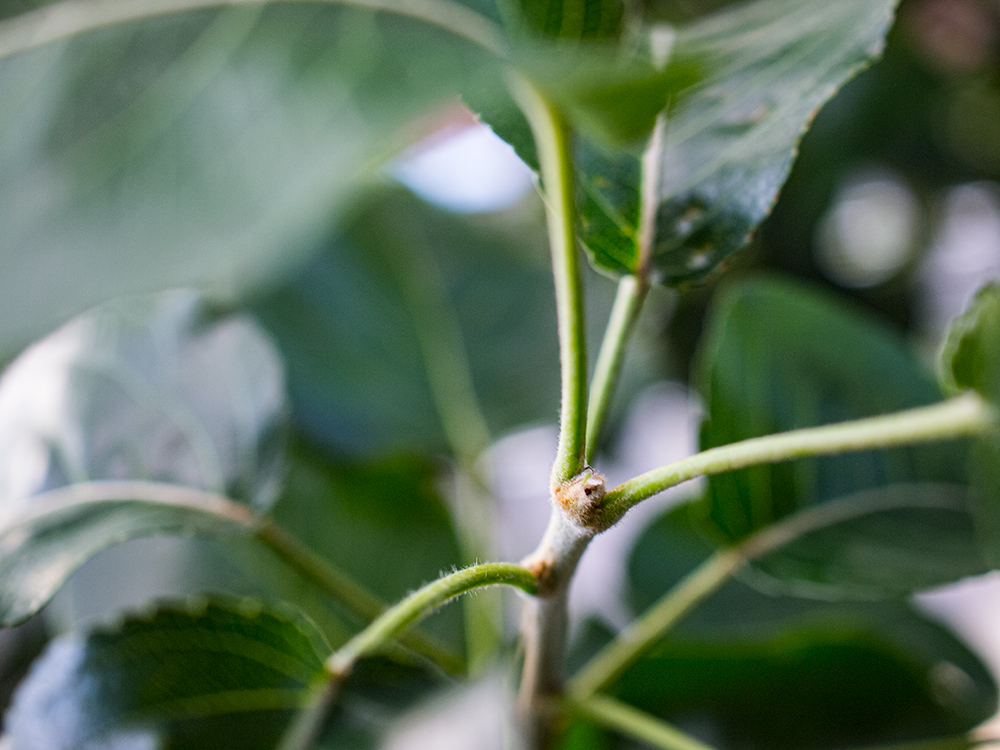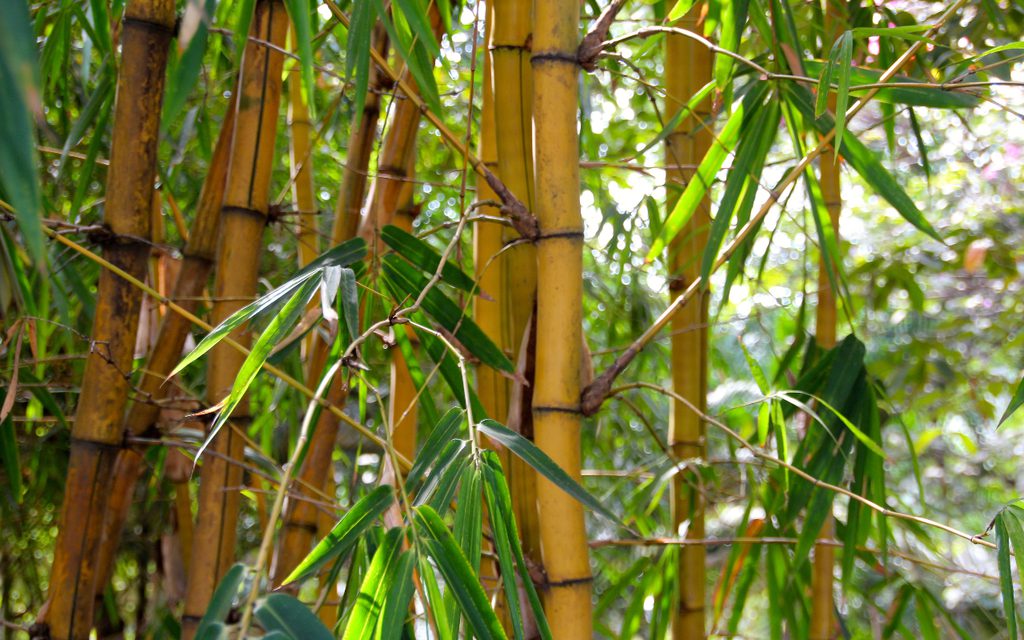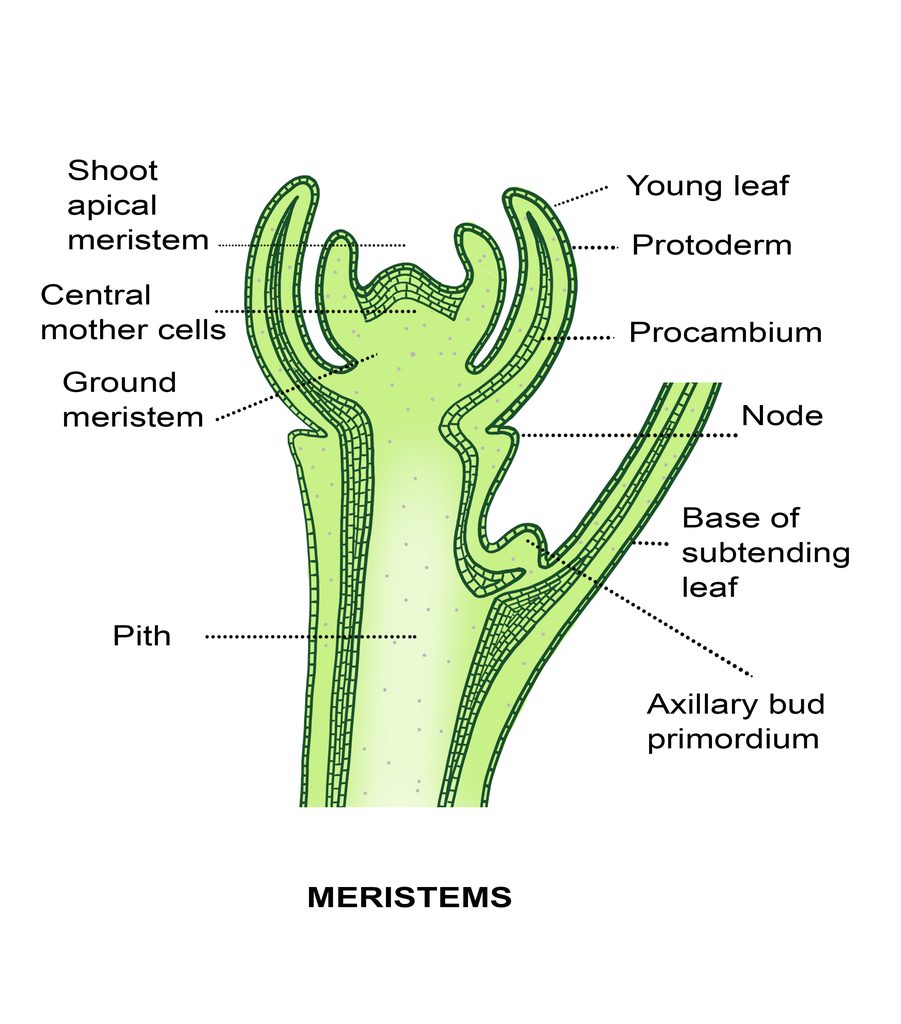
Go outside, pluck a runner of grass from your back yard and take a close look at it. You will see that it is made of a system of connected “nodes” and “internodes”: the swollen linking points are called the nodes, and the skinny part connecting one node to another is called an internode.
Usually if there is a bud, branch or leaf attached to a branch it is done so through a node, and you may be able to find nodes on older wood by looking for the scar left by a fallen leaf or branch, which have almost certainly emerged from the axillary bud coming from a node.
There are weird plants that can perform “adventitious” growth that doesn’t come from a node, such as succulents that grow new plants from their leaf margins.
The internodes serve as highways to move energy, water and food between the roots and the nodes. True roots don’t have nodes, though don’t be fooled by potatoes which do have nodal “eyes” due to the fact they’re actually a plant stem and not a true root. Ginger, onions and garlic are also actually tree stems and not roots.
All plant stems have nodes and internodes, but they are easier to see on some plants than others; for example, many types of grasses and bamboo which have hollow internodes and clearly defined, solid nodes.
Leaves, branches and flowers originate as buds in the leaf axil on a node, and every scar left by a fallen leaf is a node.
When the internode is pruned just below a node, it will die back to the previous node. This dead wood looks ugly and can promote disease, therefore pruning just above a node is generally best practice and you can even shape how your tree grows by the choosing which buds to leave based on the direction they face.
Usually internodes are long, however in some species they can be remarkably short, like hen-and-chick Crassulaceae succulents. You can see all of the scars left behind by leaves that have been discarded by the plant, indicating how short the internodes are.

Crassula family succulents are an example of stems that have short internodes. You can see the scars of dropped leaves showing the distance between nodes. Leaves and aerial roots emerge from nodes. Image source

The nodes on this ornamental pear are where the leaves are, and the internodes are the parts of the stems connecting them. The internodes are naturally longer on this plant than the succulent above. Photo via Plants Grow Here.

Bamboo canes with shoots emerging from the nodes. Image source

The nodes are the area where the leaf is, as shown in this diagram of a dicot bud. Via Plants Grow Here.
Being able to find your nodes is a prerequisite to the skills of pruning and stem cutting propagation, as well as understanding how plants grow so now you’re going to be a better gardener having learnt this knowledge. Good for you!
